Descontos imperdíveis em CRUZEIROS de barco!
Moliço (seaweeds)
O moliço, the common name for seaweed, without distinguishing between species, is the vegetation that grows submerged in the waters of salt marshes.
Moliço - what it is and what it's for?
A group of marine algae, but from a botanical point of view, it is made up of algae from the genera Enteromorpha, Ulva and Ceramium, and some higher aquatic plants from the Monocotyledoneae group such as Zostera marina, Zostera noltii and Potamogeton pectinatus, and the species Ruppia cirrhosa and Ruppia maritima.
The areas covered by molluscs are of great ecological importance, as they provide shelter for juvenile fish species, are an important source of primary production and serve as accumulators of energy and nutrients. In addition, submerged vegetation stabilises bottom sediments, removes energy from tidal currents and reduces water turgidity.
VER MAIS
| “XI Simpósio Ibérico sobre a Bacia Hidrográfica do Rio Minho” (Dimítri de Araújo Costa) - ver aqui
As far as its agricultural use is concerned, moliço was an important resource for the riverside people, who until the end of the 1950s harvested it in quantities that exceeded 200,000 tonnes a year (Silva, 1985). Today, the harvesting of moliço is close to extinction, having declined throughout the 20th century.
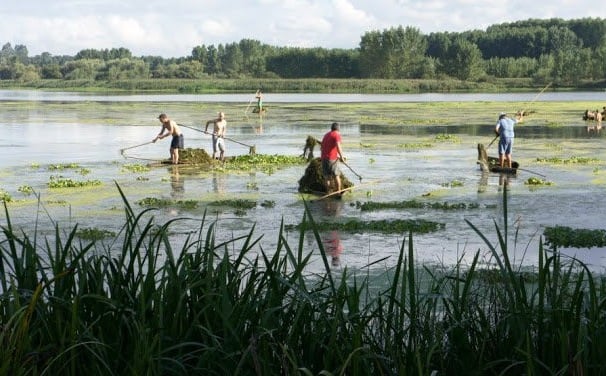

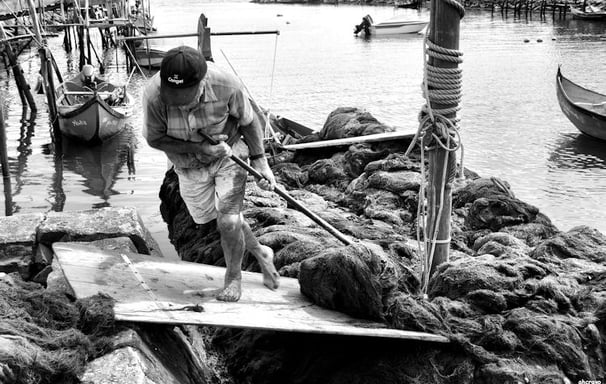

Why has the Moliço harvest disappeared?
At one time, it was common to find moliceiros sailing in the Ria de Aveiro to harvest moliço. This activity has gradually declined, mainly due to three factors:
- Socio-economic changes;
- Decrease in the moliço's distribution area;
- The appearance of chemical fertilisers.
All these developments jeopardised the existence of the boats we had become accustomed to. What's more, the lack of mollusc harvesting began to turn into an ecological catastrophe. Many of the estuary's channels began to choke, the speed of the currents slowed down and the deposition of the alluvium carried by the water accelerated, causing the estuary to silt up.
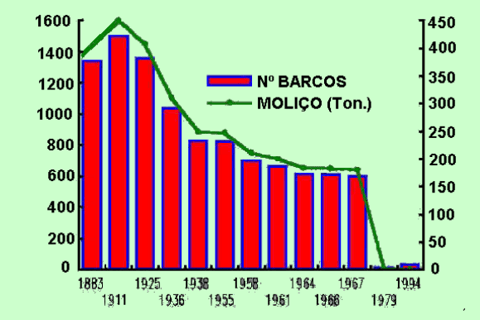

How to catch Moliço?
Wooden Tools
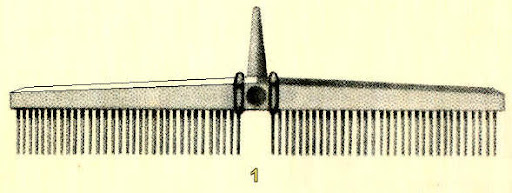

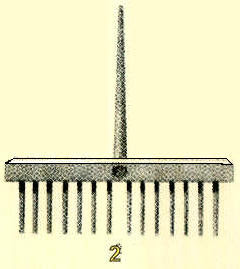

The equipment for harvesting the moliço consists firstly of drag rakes, which are made up of a handle, usually made of ‘pine’, 4 to 6 metres long, and an ‘oak’ comb 1.50 m long by 0.08 m high in the centre and 0.05 m high at the ends, with 64 tines 0.10 m to 0.12 m apart at the ends 0.02 m apart. Two iron handles with shorter tines reinforce it at its centre point. These rakes are fixed obliquely to both sides of the boat at the railings and strakes, in numbers of no less than two and no more than four.
VER MAIS | http://ww3.aeje.pt/avcultur/avcultur/DiamDias/moliceiros30.htm |
Experiências Ria de Aveiro
CONTACTO
passeiodemoliceiro@gmail.com
+351 910 951 364
© 2024. All rights reserved.
